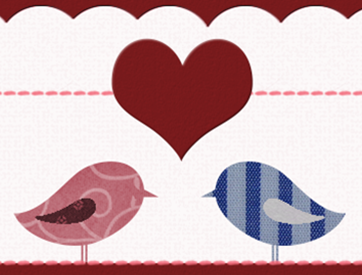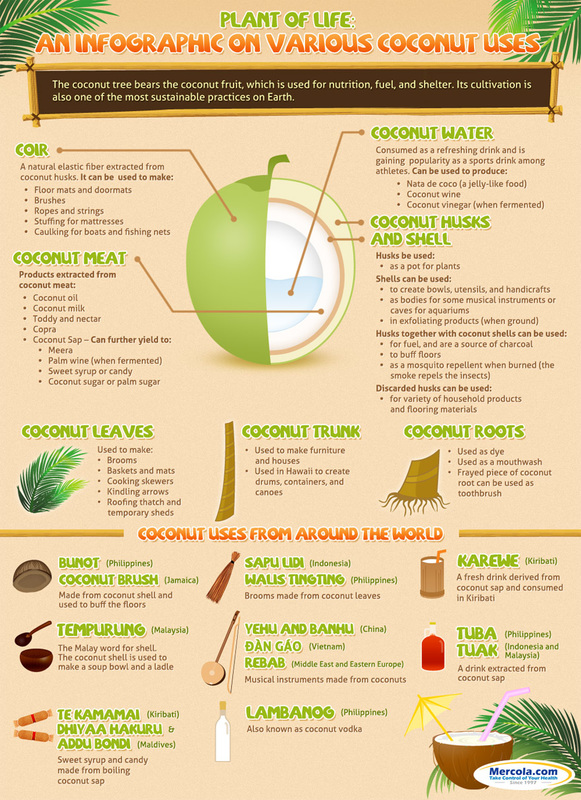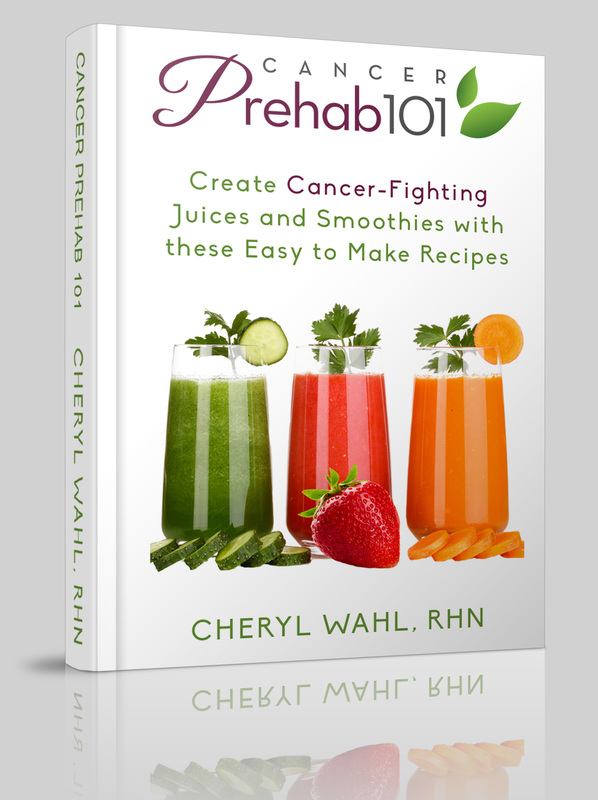|
Thankfully, with so many redeeming qualities, the cocao in chocolate can be your ticket to heavenly bliss.
Cocao beans contain many substances that have earned them the title of “Nature's Anti-depressant”. There are actually three neurotransmitters in these dark, delicious beans – serotonin, dopamine and phenylethylamine (PEA) – all of which support a positive mood and healthy mental state. These powerful brain chemicals impart a feeling of “being in love” when cocao is enjoyed. But the benefits don't end there. Cocao beans contain many superstar nutrients that make them a superfood, but only when they're in their natural state. Be wary of milk chocolate, white chocolate or chocolate with less than 70 percent cocao. The high sugar content of these products far outweighs the benefits of their minimal cocao content. In their raw, natural state, cocao beans are completely sugar free and hence somewhat bitter in taste. They're also over 50 percent fat, and yes, most of it is saturated fat. However, a good proportion, about 35 percent, is “good” monounsaturated fat that is beneficial to health. In addition to psychoactive neurochemicals, cocao also contains more generic, but no less valuable, nutrients such as magnesium. Magnesium is one of the minerals responsible for muscle relaxation and is known to be very effective in relieving muscle cramps, constipation and hypertension. In fact, scientists have found that low levels of magnesium are often found in women who crave chocolate. Interestingly, the body knows it can obtain magnesium from cocao. Magnesium also supports a healthy heart and improves the hearts ability to pump blood effectively. That makes cocao an all-around heart happy food. The antioxidant power of cocao is surprising high. When cocao powder, green tea and red wine went head to head in a Cornell University study, researchers found that the cocao contained up to three times the level of antioxidants in comparison to the other notable sources. One antioxidant in cocao, epicatechin, has received special recognition as a “natural penicillin” and pain killer. Recent research has shown that populations that consume large amounts of cocao have ultra-low rates of the most common killer diseases in Western society. (Case in point, the Kuna people of Panama, who drink up to 40 cups of cocao a week, enjoy diabetes, heart disease, cancer and stroke rates that are less than ten percent.) So, the end result? This Valentine's Day, let's eat chocolate! Just make sure it's the heart healthy kind. Love Cheryl xoxo
0 Comments
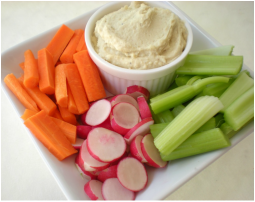 That’s it, you’ve declared it…”I’m eating healthier this year! No more fast food, no more empty calories, watch out veggies, here I come!” From a health standpoint, vegetables are an unbeatable food: naturally nutrient-rich; low in calories; high in fibre and packed with disease-fighting phytonutrients. All types of vegetables can be nourishing and delicious – fresh, frozen, and juiced. But are you getting enough? To maximize your health with vegetables, nutrition experts suggest at least 5 - 7 servings per day – but why stop there? With so many ways to enjoy them, you could easily eat vegetables at breakfast, lunch, dinner and snacks. Here are a dozen daily ways to treat yourself to good health!
Many people don't eat vegetables until dinner. Make a commitment to your health - Check off the new ways you want to try to enjoy more veggies during the day: I can add vegetables at breakfast by: □ Adding vegetables like spinach, mushrooms, onion, green or red peppers to an omelet I can add vegetables at lunch and snack by: □ Adding leafy greens, cucumber, or peppers to sandwiches □ Adding different vegetables to a green salad, like broccoli, green beans, asparagus or peas □ Adding a bag of sugar snap peas, carrots, peppers, celery and/or zucchini sticks to my snack □ Adding extra vegetables to soup □ Choosing kale chips instead of potato chips If you're dedicated to improving your health whether it's losing weight, lowering your cholesterol levels or reducing your cancer risk, including veggies in your day is imperative. If you need to be held accountable for the lifestyle changes you are making (and most of us do), send me an email, I'm happy to help. In good health, Cheryl Wahl, RHN Certified Professional Cancer Coach Cancer Exercise Specialist Okay, I know this time of year can be hard resisting temptation, I have a hard time too.
That's right, sweets and treats. I'm going to give you a little advice here...ENJOY THEM! Yes, I am saying you can have some, but here's the but, but there are a few rules you should follow when you do.
- apple sauce - maple syrup - dates - molasses - stevia Do you have a favourite healthy recipe to share? Or a strategy that helps you get through the eating frenzy of the holidays? Post below, I'd love to hear from you. Happy baking! Cheryl Wahl, RHN Certified Professional Cancer Coach Cancer Exercise Specialist Immune System
Your immune system is the body’s defense system. Its fundamental role is to protect the life of the body by distinguishing ‘self’ from ‘non-self’ and recognizing what needs to be eliminated or destroyed (cancer cell, virus, bacteria, environmental toxins, and internal toxins). The stronger your immune system is, the more resistant to diseases you will be, such as cold flues and even cancer. Its function is intimately connected to what you think and feel. Emotions of faith, hope, joy and a fighting spirit enhances immune function while depression, lack of purpose and repressed anger deplete it. Your immune system is made up of organs, such as the thymus gland, spleen and liver, and immune cells such as white blood cells like macrophages, killer T-cells and suppressor T-cells. Free radicals are small molecules that damage cells and cause disease. They are created naturally in the body during normal metabolism and, in moderation, your body has the ability to dispose of them. However, free radical production increases when we are exposed to external factors, such as pollution and burnt or fried food. When we are overwhelmed with free radicals, disease occurs and our immune systems become overworked and compromised. This is when illnesses occur, like colds and flues. There are a few things we can do to help build up our immune systems and keep those free radicals in check. #1 - Sleep One way we can help is by getting enough sleep. Our body does all of its healing and regenerating while we are sleeping. If we are trying to fight off any sort of illness or infection, our sleep-deprived bodies are only going to try and get us through the day. You won’t have the ability to also combat free radicals and viruses. Everyone is different in the amount of sleep we need but the recommended amount of good quality sleep for young children and adults is: (www.sleepfoundation.org) Age Hours 5 – 12 years 10 – 11 13 – 19 years 8 – 9 Adults 7 – 9 So, make sure you and your children get your zz’s, not only will you feel better but also you’ll be functioning better too. #2 - Stress Everyone encounters stress. It could come from fears and worries, over-scheduling, work, divorce or separation, as well as world news. Stress affects the immune system and reduces its capability to function effectively. Stress reduction is important. Try these suggestions to help reduce the effects of stress:
#3 - Nutrition As mentioned earlier, free radicals damage cells and can cause disease and illness. Some sources of free radicals come from food. Anything that is deep fried, from French fries to frozen chicken nuggets, contains free radicals. Pesticides sprayed on our fruits and vegetables are a big source, as well as preservatives that are put in our food. First off, opting for fresh, organic foods whenever possible is a great way to reduce the intake of free radicals. Secondly, we need to eat foods high in antioxidants to help reduce free radicals and increases the body’s ability to fight disease and illness. Antioxidants and their sources:
And check out my recipe tab for Immune Building Celery Root Soup and Immune Booster Juice. Have a great week and stay healthy. In good health, Cheryl Wahl, RHN Certified Professional Cancer Coach Cancer Exercise Specialist 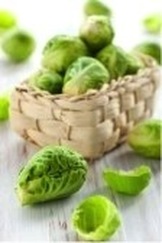 They’re a staple at the Holiday dinner table and you either love them or leave them. I have always LOVED them. I would even offer to clear the table after dinner so I could munch on them as I was helping. I see now that I was on to something, and they’re not just for the Holidays! Brussels sprouts are part of a group of foods called cruciferous vegetables, from the brassica family. Also included in this group are arugula, bok choy, broccoli, cabbage, cauliflower, collard greens, kale (one of my favourites), radishes, and turnips. They are rich in nutrients such as carotenoids (beta-carotene, lutein, zeaxanthin), vitamins C, E, and K, folate and minerals. They are also high in fibre. Of particular interest, they contain a group of chemicals, known for their cancer fighting compounds, called glucosinolates. Indole-3-carbinol and sulforaphane, two types of glucosinolates, are most commonly studied for their anticancer effects. They may help:
With all these cancer-fighting properties, why wouldn’t you include them in your daily healthy eating regime. And while you’re giving your body a fighting chance against cancer, you’re boosting your immune system, cleansing and detoxing, and getting a much needed dose of vitamins and minerals too. How do you prepare them? I love them many different ways: steamed or shredded in a salad but my favourite is definitely roasted (with sweet potatoes and beets, yummmm!) You can try this recipe on my recipe tab, Garlic Brussels Sprouts, or this one from Food.com, Cream of Brussels Sprout Roasted Garlic Soup (maybe my new favourite soup). Let me know what your favourite ways to enjoy brussels sprouts are, or any of the other brassica foods. I always love to try new recipes. In good health, Cheryl 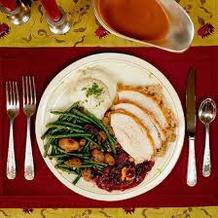 Thanksgiving is a holiday tradition filled with family, fun, food, food, food, alcohol and football. Leftovers consist of more food and about 2-5 extra pounds. The average person will consume approximately 3000 – 4500 additional calories during the Thanksgiving eat-a-thon weekend. How much exercise does it take a person to burn off a 3000 calorie Thanksgiving Day meal?
Most Nutritionists would tell you that Thanksgiving is just another day and there is no need to indulge or overeat. While that might be true, it’s just not realistic for most people. Accomplishing your weight loss and health goals means understanding how to balance your meals and enjoy your favourite holiday foods in moderation. No need to worry...there is a way to enjoy Thanksgiving and still keep to your nutrition and exercise goals. Get a copy of my "Thanksgiving Day Survival Guide", where you will learn:
Click here to get your FREE copy now. Happy Thanksgiving! Cheryl  Consider this: Over 25 percent of the vitamins and minerals we consume go to supporting our eyes. For example, in healthy eyes, the concentration of vitamin C in eye vessels is higher than anywhere else in the body. It's not surprising that healthy food choices play a role in preventing age-related macular degeneration, glaucoma, cataracts and other major thieves of vision. As eye health is connected to whole body health, a diet that supports healthy, strong vision is similar to a diet that supports health in all our body systems. We all know that eating mainly fresh, whole vegetables and fruits, whole grains and lean proteins with few processed foods or added sugar, sodium or trans fats is the best way to ensure good health and good eyes. In addition to these basics of eating well, however, there are specific vitamin and minerals that worth increasing your intake of via foods or supplements. Beta-carotene. High levels of antioxidants including beta-carotene, selenium, and vitamins C and E protect against photosensitive problems such as macular degeneration, a leading cause of vision impairment in North America. Increasing one's intake of antioxidants means choosing bright orange and dark green vegetables more often. Your mother was right – carrots are good for your eyes!
Bioflavonoids. These compounds are a super-class of antioxidants which work in synergy with better known antioxidants like vitamin C. High intake of bioflavonoids such as the quercetin found in onions, apples and garlic are known to be effective prevention for cataracts which cloud our vision as we age. Essential fatty acids. Also known as EFAs or “good” fats, these omega-3s and omega-6s are essential because every system in our body needs them and we can only get them from our diet. EFAs, which are polyunsaturated, compete with saturated fats to become part of the cell membranes in our eyes. Saturated fats make cell membranes stiff while EFAs are conducive to fluidity and less inflammation. As you probably know, cold water fish like salmon, mackerel and sardines are good sources, but so are seed oils from hemp, flax and black currants. Lutein and zeaxanthin. These two carotenoids (they're yellow and orange-red) are in the same family as beta-carotene and are found in many of the same foods including egg yolks, corn and paprika. Research from Harvard Medical School found that eating carotenoid-rich dark leafy green vegetables at least once of week was enough to lower risk of macular degeneration. Of course, you ought to be eating way more that than but it goes to show how powerful these nutrients are! Lycopene. Like lutein and zeaxanthin, lycopene is red or pink plant pigment that you may have heard of in association with prostate cancer or healthy skin. It 's also known to prevent aging of the eye. This antioxidant deserves all the press because it is twice as powerful as beta-carotene and ten times more powerful than vitamin E! Best food sources include watermelon, tomatoes, guava and pink grapefruit. In good eye health! Cheryl Wahl, RHN Certified Professional Cancer Coach Cancer Exercise Specialist  Oh, I'm having so much fun with these national food days, why didn't I start them earlier! This one is a good one, who doesn't LOVE strawberries (unless you're allergic to them I guess). I got the following information from foodimentary.com. They had some interesting facts and history on the strawberry:
It’s almost here! Saturday’s a BIG day for me! For the past couple of months, I’ve been training for the Spartan race and it’s this Saturday June 6th. For those that don’t know what this is, it’s an obstacle course race that’s a 5, 10 or 15 km run with 15-20 obstacles spread throughout. It’s tough, it looks a little scary, but I’m excited. As a fitness instructor and nutritionist, I need to stay in shape. I don’t know about you but for me, I need to have a goal and a schedule to stay on track. At the beginning of the year, my friend Diane and I decided to organize a group of people into a team and train together every week. I added in a weekly nutrition information program and here we are! One product that I have come to love over the past couple of months, and is a staple in my house, is the mighty coconut. Did you know that the survival of ancient civilizations has a lot to do with the types of food they live off? It's no wonder many ancient foods, like quinoa and the coconut of the Pacific Islanders, have all the nutrients to sustain these societies. These foods are now called super-foods in today's society, in contrast to villainous fast foods. However, these super-foods super-foods were considered the norm by history's most productive civilizations. Coconut is a superfood in a class by itself because it contains saturated fat – yes, the fat we've all been told to avoid like the plague! There was a time when this tropical fruit was shunned for being high in saturated fat, but research has vindicated the coconut revealing that it contains a type of saturated fat that is beneficial to health. How can that be? The answer lies in the length of the fatty acid chain. Here's a quick lesson in chemistry 101 (if science isn’t your thing, skip to the next paragraph, I won’t tell). Fatty acids are composed of a long chain of carbon and hydrogen molecules. The number of carbons determines the length of the fatty acid while the number of hydrogens determines the level of saturation. In the body, longer chain fatty acids have been found to have negative health effects while shorter chain fats may contain benefits. The saturated fat in coconuts and coconut oil is medium chain in length and easily absorbed into the body. This means that energy from coconut fat burned up faster with less accumulation of the fatty deposits we all want to avoid. The medium chain fat in coconut has actually been called “the world's only low-calorie fat” because it metabolizes much like carbohydrates serving as a readily available, long-lasting energy source of the body. There's even evidence that eating rich coconut can aid in weight loss. It's not just its special type of fat that makes coconut a healthful superfood. The raw flesh of a coconut is high in fibre and, like other nuts, provides an excellent source of B vitamins, iron and zinc. Drying coconut concentrates these nutrients giving them more nutritional impact per gram weight. Dried coconut is a versatile ingredient that's delicious on cereal, in trail mix or sprinkled onto a pure simple bowl of fruit. Coconut is naturally sweet so skip the sweetened dried coconut flakes and go for unsweetened. You can also obtain the wonderful nutrition of coconuts in oil. It’s what I cook with and use in my baking. When using coconut in recipes, however, beware that high heat destroys its nutrients so avoid cooking them at high temperatures. Another part of the coconut, I’m sure you’ve heard about, is coconut water. It’s an extremely popular product on the market right now. It is a clear, light, refreshing liquid (95 percent water) extracted from young, green coconuts that have not reached maturity. These look much different from the brown hairy ones you commonly see in the produce section—they are white, smooth, and pointed on one end, flat on the other. Coconut water is rich in B vitamins and minerals and is an excellent source of electrolytes and natural salts, especially potassium and magnesium. The health benefits of consuming coconut water are many:
So as I’m training, coconut water is my sports drink. Just be careful of the many brands that are out there. Make sure it’s 100% natural coconut water, no sugar added and not from concentrate. I like to add one can to my water bottle and then fill it with cold filtered water. Have a look at the infographic below. It shows all the uses of this wondrous plant. Learn how the coconut tree provides all-around benefits -- from its husks and roots to coconut oil -- through our infographic "Plant of Life: An Infographic on Various Coconut Uses." Use the embed code to share it on your website.
What uses have you found for coconut products? Post in the comment below and share what you've discovered. In good health, Cheryl Wahl, RHN Certified Professional Cancer Coach Cancer Exercise Specialist Eating out does not have to derail your weight loss and healthy eating efforts. Being prepared and having a strategic plan will allow you to eat out at almost any restaurant and still stay on track.
TIP 1 - Plan ahead: Most restaurants have their menus online and some even have the nutritional info posted (chains mostly). Go online, search for the nutrition information of the restaurant you want to go to, and plan out your choices. Popular restaurants that have all their nutrition facts posted online include Starbucks, Pizza Hut, Chipotle, The Keg, Milestones, Montana's, Boston Pizza and more. http://caloriecount.about.com/restaurants-mc1 – This website also has a pretty broad listing of restaurants and their menu item nutrition facts. If you want the low-down on nutrition information for menu items, The Economist ran a great commentary on the issue as it pertains to New York when in first hit the fan in 2011. http://www.economist.com/blogs/babbage/2011/07/menu-labelling Once you arrive: TIP 2- Drink please! Try ordering a warm drink first thing such as hot water with some fresh lemon slices. You’ll be surprised how this warm calming drink can fill you up and soothe the craving/hunger beast. Herbal tea is also a great option while coffee tends to throw off blood sugar levels and may lead to cravings and bad decisions later on. TIP 3 - Be an assertive orderer: Don’t be afraid to modify the menu. Trust me, in this age of “nutritionism”, waiters are used to it. Ask questions and know the terminology. Grilled, steamed, broiled, boiled and baked are fine but beware of terms such as creamy, smothered, lightly breaded, deep fried. Ask for sauces on the side and leave out the fries/rice/pasta/potatoes that usually come with the main and ask for extra veggies instead (most restaurants are happy to do this). TIP 4 - Start with soup or salad: both can be filling and satisfying. Order the dressing on the side and dip your fork lightly in the dressing before every forkful. Stay with non-creamy soups. Ask the server if dairy is added that will let you know if they add cream or cheese or even butter (you can even tell your server that you are lactose intolerant to make sure they don’t add cream, butter or cheese) TIP 5 - Appetizers as the main course: Try ordering from the appetizer menu if you don’t find anything you want on the main menu such as grilled calamari, caprese salad, or shrimp cocktail. Saves calories with smaller portions and is less expensive. TIP 6 - Liquor Control: Alcohol can stimulate hunger so never drink on an empty stomach (really throws off blood sugar) and try to follow the 1:1 rule; follow a glass of wine with a full glass of water. Even try to cut the wine with ½ club soda or Perrier in a wine Spritzer or mix vodka with soda water. TIP 7 - Portion Control/Leftovers for the next day: Most restaurants provide huge portions-take a look at the size of the plate or bowl! Eyeball your serving size (palm of your hand) and divide your portion accordingly. Make a mental note to have the rest packed-up for home, or, better yet, ask the waiter for a to-go container and box it up right away. Bonus: Less for you to cook the next day. The smart phone world is still trying to stay on top of restaurant nutrition. There are a few good apps out there, but they need constant updating. Here are a few free ones that are worth trying, just to get a sense of what your waistline is up against: https://itunes.apple.com/app/restaurant-nutrition/id285180322?mt=8 – Restaurant Nutrition by Foundation HealthCareNetwork https://play.google.com/store/apps/details?id=com.unifiedlifestyle.rn&hl=en – Restaurant Nutrition by Unified Lifestyle http://appworld.blackberry.com/webstore/content/755/?countrycode=CA - Calorie Count Nutrition Search by Calorie Count |
Want to reduce your risk of cancer, receive recipes and health information regularly straight to your in-box? Download your free copy now.
Archives
December 2022
Categories |

